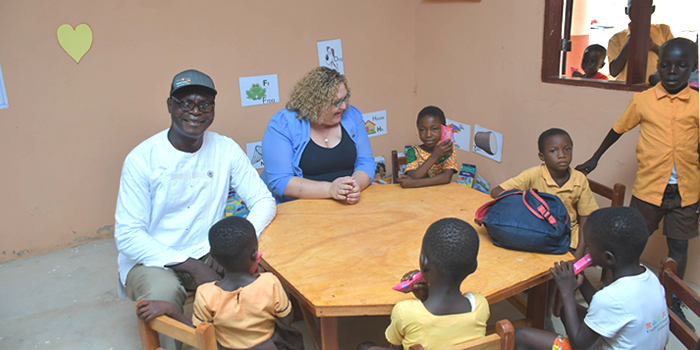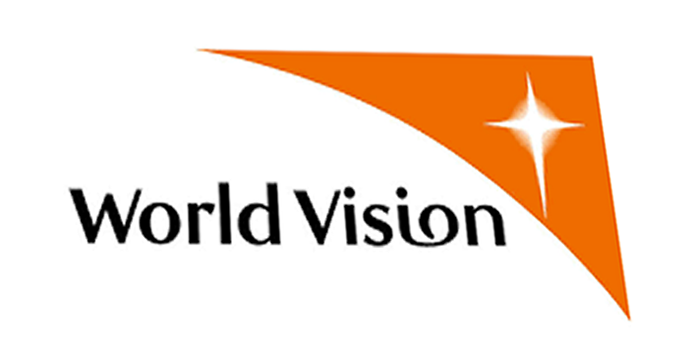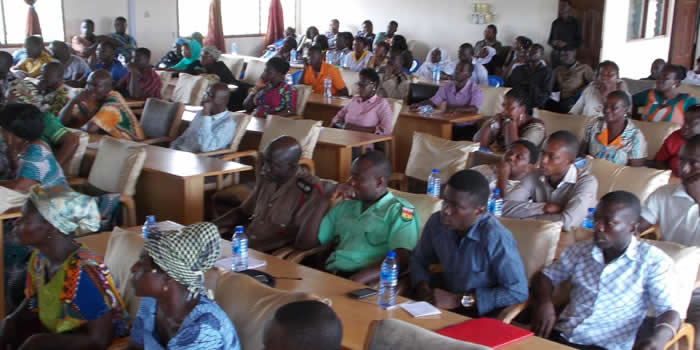

SOCIAL INFRASTRUCTURE
Information Communication Technology
Introduction
Information Communication Technology (ICT) can be defined to include a group of electronic technologies and techniques used to manage information and knowledge. Due to its importance in recent development arena, the 2010 Population and Housing Census for the first time sought information on the ownership of mobile phones, usage of desk top or laptop computers and internet facilities by individuals and households. ICT is recognized as an important knowledge-based tool necessary for socioeconomic developments.
The role of ICT in the economy of Ghana has been widely recognized though it has not been fully experienced in all parts of the country. The recognition is reflected in the development of a national ICT infrastructure, institutional and regulatory framework for managing the sector, promoting the use of ICT in all sectors of the economy, implementing E-governance in all government institutions and the construction of a National Data Centre as well as regional and district information centers. This chapter presents the data on the use of ICT in the Upper Denkyira West District.
Mobile Phone Ownership
Table 5.1 presents information on the population 12 years and older and those amongst them who own mobile phones and those who use internet. The data reveals that 35.3 percent of persons 12 years and older in the Upper Denkyira West own mobile phones compared to a regional average of 44.9 percent. Whiles nearly 44 percent of the male population 12 years and older own mobile phones, almost twenty seven percent of their female counterparts own mobile phones.
Use of Internet
The use of internet facilities has increased enormously throughout Ghana in the last two decades. Since its inception communication by using postal services has reduced substantially in favour of electronic mails. Businesses have adopted its use in place of postal services. Individuals use the internet to communicate instead of posting letters. The numerous software programmes which are being developed on daily basis for social networking further entice 41
Housing Stock
Table 8.1 presents information on the housing situation in the Upper Denkyira West District. The total number of houses in the District is 10,099 and with a District population of 60,054, the number of persons per house is six. On the average, there are 4.4 (approximately four) persons in each household in the District and an average of 1.3 (approximately 1 household) households per house in the District.
Type of dwelling, Holding and Tenancy Arrangement
Ownership status of dwelling
Table 8.2 presents the ownership status of the dwelling unit households live in. The data show that more than 64 percent (8,652) of the households in the District own their dwelling, with the same proportion of male headed household (65%) and female headed households (64%). Moreover, 20.5 percent of female headed households and 16 percent of male headed households live in a dwelling owned by a relative not a household member. Only one percent of dwelling are public or government housing unit. Those being purchased through mortgage schemes constitute 1.7 percent, private employer ownership and other private agency (1.7%.). The least proportion of the dwelling units are those owned through other means (0.3%.).
Type of dwelling
As shown on Table 8.3, compound house is the predominant dwelling unit occupied by households in the district. Whiles slightly more than one in two (50.3%) households occupy compound house, 37.4 percent live in Separate houses, Semi-detached house (6.5%), huts/buildings same compound (2.6%) and flat/apartment (1.9%). Table 8.3 also indicates that there is a higher proportion of female headed households (56.1) living in compound houses than their male (47.7%) counterparts. However more male headed households live in separate house (39.4) than female headed household (32.9%).
Construction Materials
Materials for outer wall
Table 8.4 shows that the main construction material used for the outer wall of dwelling units in the District is mud brick/earth (66.5%) with cement blocks or concrete (26.2%) being the next main material. The rest of the construction materials are sparely used by households; wood (2.1%), landcrete (2.0%), burnt bricks (1.7%) stone (0.2%) and bamboo (0.2%).
Materials for the floor of dwelling units
Table 8.5 shows that in the Upper Denkyira West District 78.7 percent of the floor of dwelling units is made of cement or concrete. The next important material for floors is earth/mud (19.4%) areas. Although ceramic or porcelain or marble tiling has gained some popularity in the country in recent times, not much of it has been used in the District. The materials least used for the floor of dwelling units were wood, Vinyl tiles and terrazzo tiles each with 0.1 percent.
Materials for roofing
The major roofing material is metal sheet which accounts for 83.2 percent of the 14,463 dwelling units in the District. This is indicated on Table 8.6.
Thatch/palm leaf or raffia is the second highest roofing material which makes up 7.2 percent of the dwelling units. Also about 5 percent of the dwelling units are roofed with bamboo whereas mud bricks/earth constitutes 1.2 percent. The roofing materials whose usages are not widespread across the District are; slate/asbestos (0.9%), cement /concrete (0.9%), roofing tiles (0.6%), wood (0.6%) and others (0.6%) in that order.
Room Occupancy
The number of sleeping rooms available in dwelling unit gives an indication of the extent of congestion in households. Overcrowded rooms have the risk of spreading communicable diseases faster and also affect how much rest time individuals would have. Infectious diseases, such as chicken pox, tuberculosis and respiratory infections could spread quickly in congested rooms. Data on household sleeping room occupancy and number of ‘sleeping rooms’ per household are presented in Table 8.7 below.
Table 8.7 shows that about six in ten (59.5%) of households in the Upper Denkyira West District occupy only one sleeping room compared to the regional average of 64 percent and a national average of 54.4 percent. Nine out of 10 (91.4%) single person households occupy one sleeping room whiles 5.3 percent have two rooms. Although the proportion of households that occupy one sleeping room decreases with increasing household size, the data suggest there is congestion. This is especially so when half of five member households occupy only a single sleeping room.
Access to Utilities and Household Facilities
Main source of lighting to dwelling units
Figure 8.1 shows that over half (56.9%) of the dwelling units are connected to the national grid. Almost a quarter (24.0%) use flashlight or torchlight as the main source of lighting and 17.8 percent depend on kerosene lamps. These three sources are by far the major sources of lighting to dwelling units in the District. Nevertheless, there are other lighting sources to dwelling units and they include electricity from private generator (0.5%) solar energy (0.4%), gas lamp (0.2%), candle (0.1%) and firewood (0.1%).
Main sources of cooking fuel
The three main sources of cooking fuel in the district as recorded at the 2010 Population and Housing Census are shown on table 8.9. They include wood (75.3%), charcoal (14.8%), gas (3.7%). A small percentage (5.4%) of the households does not cook. The availability of wood and different plant species in the district due to the presence of dense forest and the rural nature of the district might be the explanation for the high patronage of firewood and charcoal and less of gas. Less than one percent of the dwelling units use electricity (0.2%), kerosene (0.2%) and crop residue (0.4%) for cooking.
Cooking space
It can further be seen from Table 8.8 that the four predominant cooking spaces used by households are separate room for exclusive use by household (47.8%), veranda (15.6%), open space in compound (13.0%) and separate room shared with other households (9.2%). In all, 7.7 percent of the household dwelling units has no space for cooking while 5 percent cooks in a structure with roof but without walls.
Main source of Water for drinking and for other Domestic use
Source of water for drinking
Quality and safe drinking water is an essential requirement to man, considering its numerous implications for his health and related activities. Figure 8.1 shows that the major sources of drinking water in the District which are bore-hole/pump/tube well (42.3%), public tape/stand pipe (25.1%), protected well, protected spring and rain water and pipe borne outside dwelling (13.7%). About 8.0 percent of the households obtain their drinking water from river/stream. This comes with a serious health implications ranging from buruli ulcer to guinea infections and other water-borne diseases. Protected well supplies drinking water to 4.2 percent of the households.
The rest of the households depend on sachet water (1.4%) and bottled water (0.1%); these are sources that are gradually becoming important sources of drinking water. Unprotected well supplies drinking water to 3.0 percent of households while pipe-borne water inside dwelling is the main source of drinking water for 1.0 percent of households. The other water sources comprising rain water (0.3%), protected spring (0.2%), unprotected spring (0.1%), dugout/pond/lake/dam/canal (0.5%) and tanker supply/vendor provided (0%) altogether make up less than two percent of the major sources of drinking water for households in the district.
Source of water for other domestic purposes
Table 8.10 provides information on the main sources of water for domestic purposes. The sources are similar to those for drinking water as can be seen from Figure 8.1.
The only exception is the absence of sachet and bottled water for domestic purposes. The percentages of the households that are depending on the main sources of water for domestic purposes ranges from the high of 43 percent for bore hole/pump/tube well (43.0%) to a low of 0.1 percent for rain water, tanker supply and unprotected spring. The other sources are public tap/stand pipe (24.6%), pipe-borne outside dwelling (13.3%), river/stream (8.7%), protected well (4.8%) and unprotected (3.3%). 56
Date Created : 11/23/2017 6:29:59 AM







 facebook
facebook
 twitter
twitter
 Youtube
Youtube
 +233 593 831 280
+233 593 831 280 0800 430 430
0800 430 430 GPS: GE-231-4383
GPS: GE-231-4383 info@ghanadistricts.com
info@ghanadistricts.com Box GP1044, Accra, Ghana
Box GP1044, Accra, Ghana